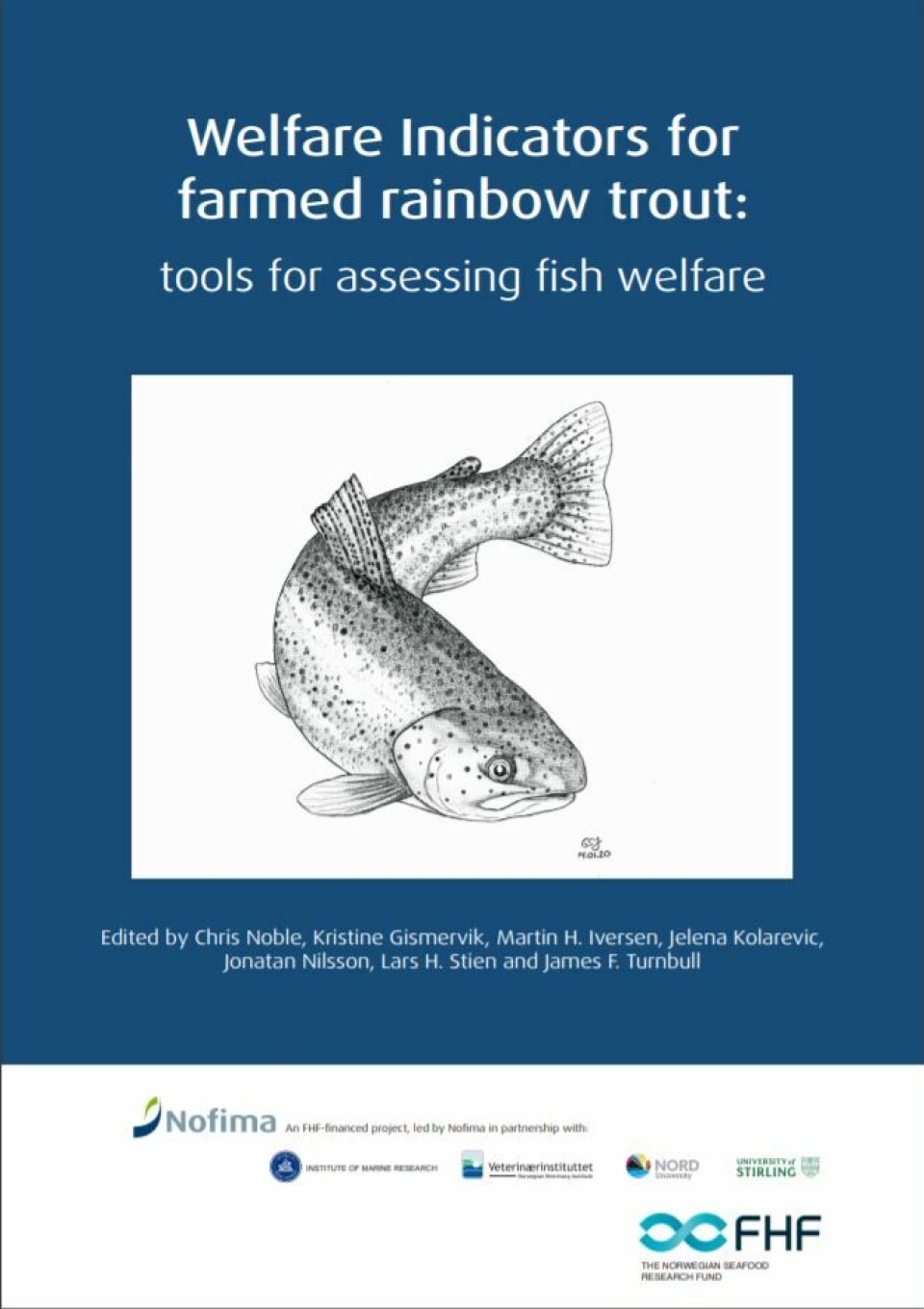
Trout handbook follows in wake of salmon guide
A new handbook on welfare indicators for farmed rainbow trout has been released this week. It is a sister publication to the FISHWELL handbook on welfare indicators for farmed Atlantic salmon that was released in 2018.
The FISHWELL handbooks are a collaboration between fish welfare researchers and veterinarians at the University of Stirling’s Institute of Aquaculture (IoA) and four Norway-based institutions - the food research institute Nofima, the Institute of Marine Research (IMR), the Norwegian Veterinary Institute (NVI) and Nord University. The trout handbook is 310 pages long, is available in English and Norwegian and can be downloaded for free from Nofima’s website.
“Atlantic salmon and rainbow trout dominate farm animal production in Norway and are key aquaculture species in many other countries,” said Lars Helge Stien, a senior scientist at the Institute of Marine Research.
“There is increasing interest in their health and welfare from a wide range of stakeholders including those working within aquaculture, the R&D community and society in general.”

Welfare toolboxes
Chris Noble, a senior scientist at Nofima who is originally from Carlisle in the north of England, led the project.
He said: “Our aims when we started the project were to review and evaluate the range of differing existing and emerging welfare indicators for assessing the welfare of farmed salmon and trout. We then assembled welfare indicator toolboxes for the wide range of production systems and operations that the fish are subjected to.”
The two handbooks follow the same format.
“Whilst there are many similarities between Atlantic salmon and rainbow trout in terms of their welfare needs, there are also many differences in, for example, their responses and behaviour that needed to be addressed in each book” said Martin Iversen, associate professor at Nord University.

Designed for farmers
Part A gives an overview of fish welfare, and outlines what is known about the welfare needs of each species and conditions that may affect the fulfilment of these needs.
Part B outlines fit-for-purpose welfare indicators for assessing fish welfare in different production systems, such as sea cages and flow-through systems. Part C assembles welfare indicator toolboxes for different routines and operations, such as pumping, crowding, grading, vaccination and slaughter.
“We tried to make Part B very practical and user friendly. Farmers are often very busy, and we wanted them to get a detailed yet effective overview of relevant welfare indicators for their differing production systems,” said Jelena Kolarevic, a scientist at Nofima.
30 years of knowledge
Jimmy F Turnbull, Professor of Aquatic Population Health and Welfare at the IoA, Stirling, said: “Many researchers have worked on farmed fish welfare over the last three decades, but this is the first time all of that information has been brought together in an accessible form for farmers, regulators and other stakeholders.”
The trout handbook can be downloaded here.























































